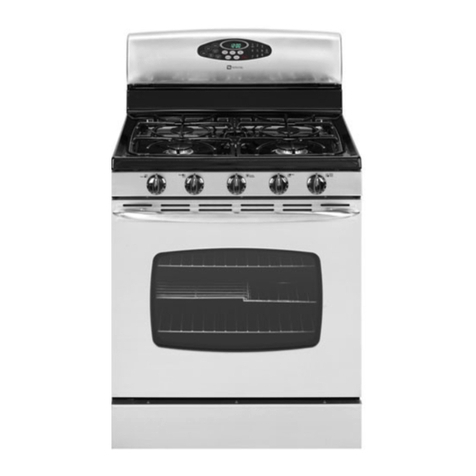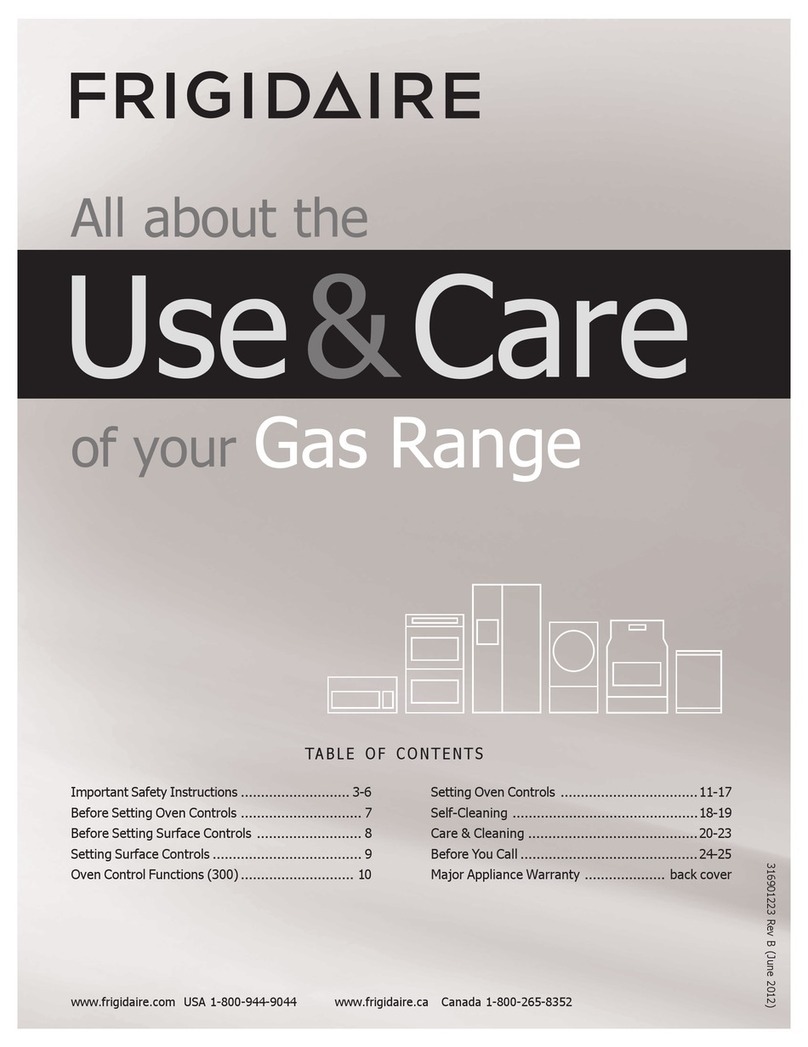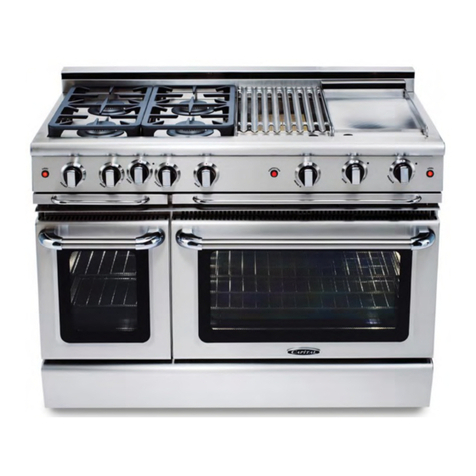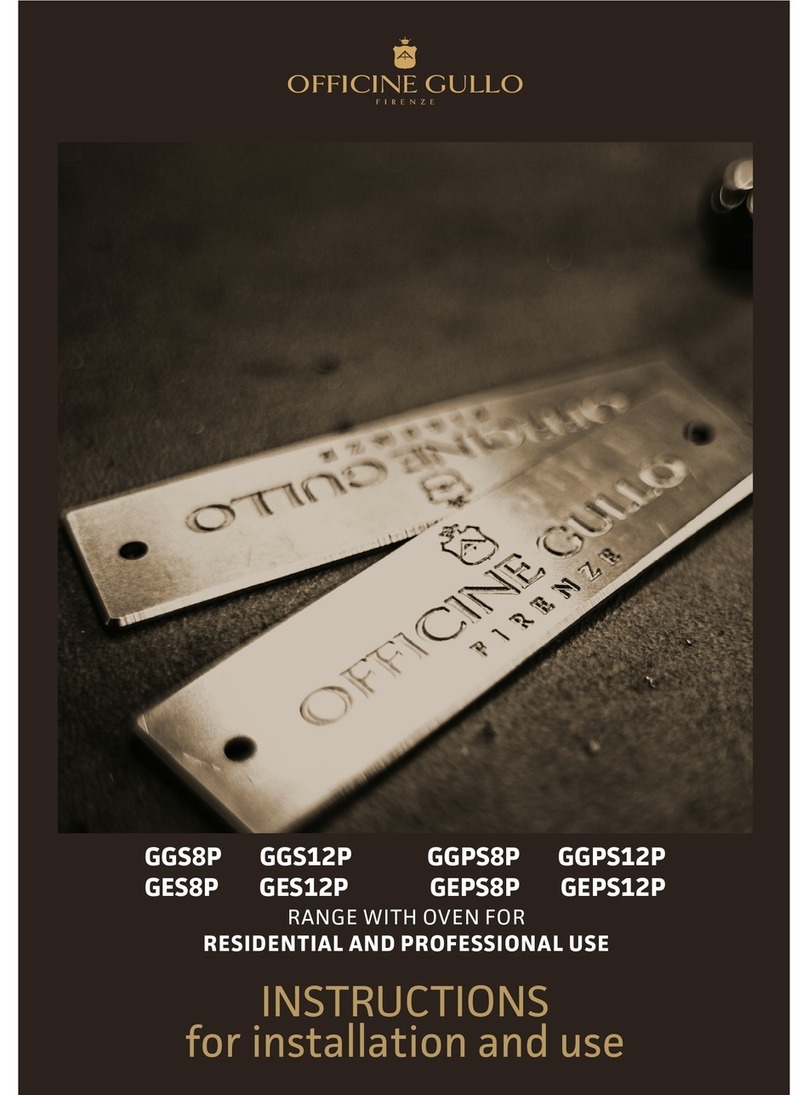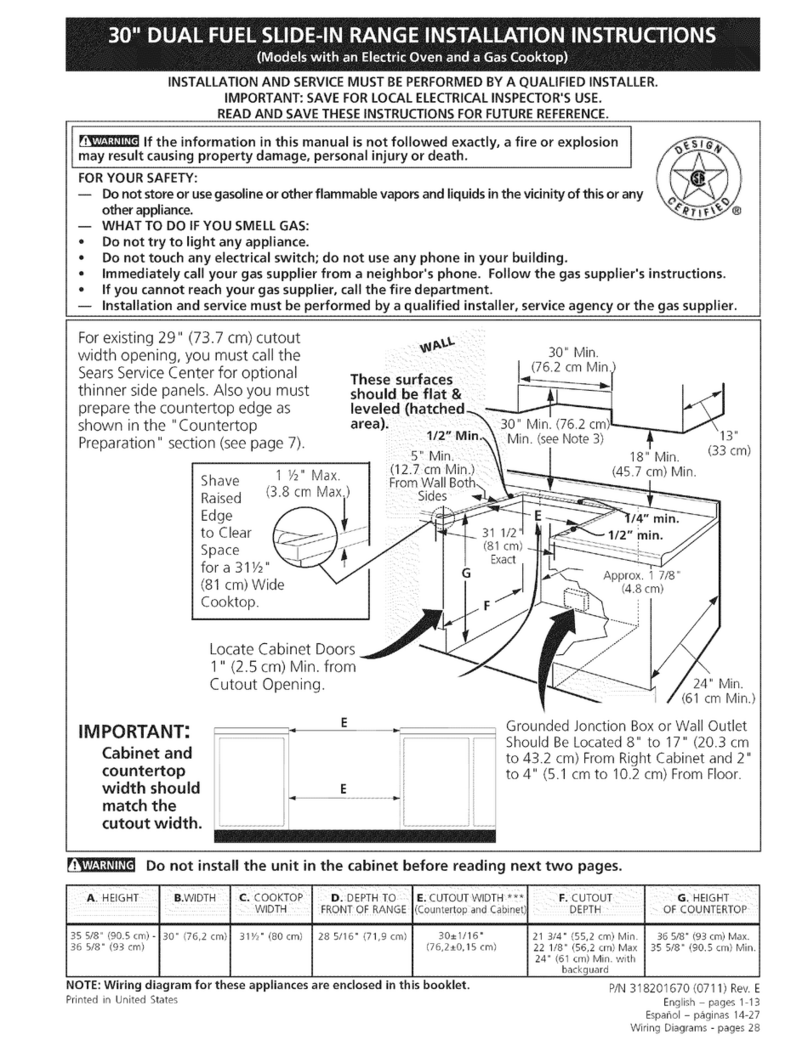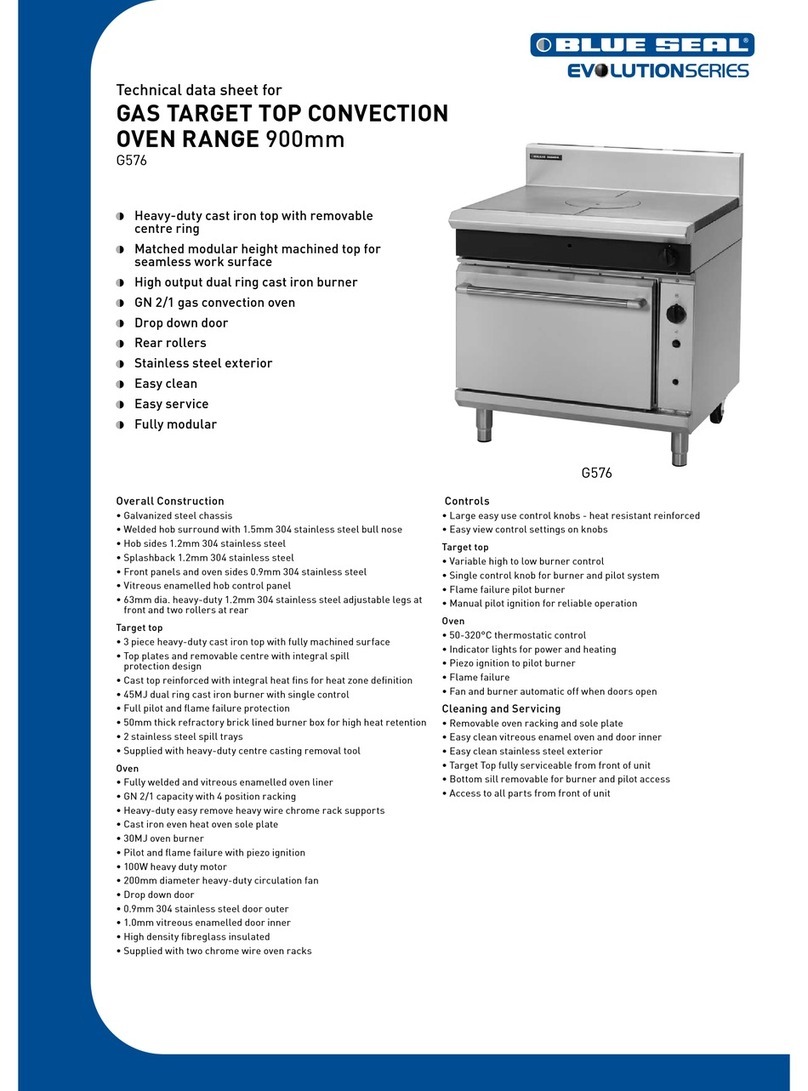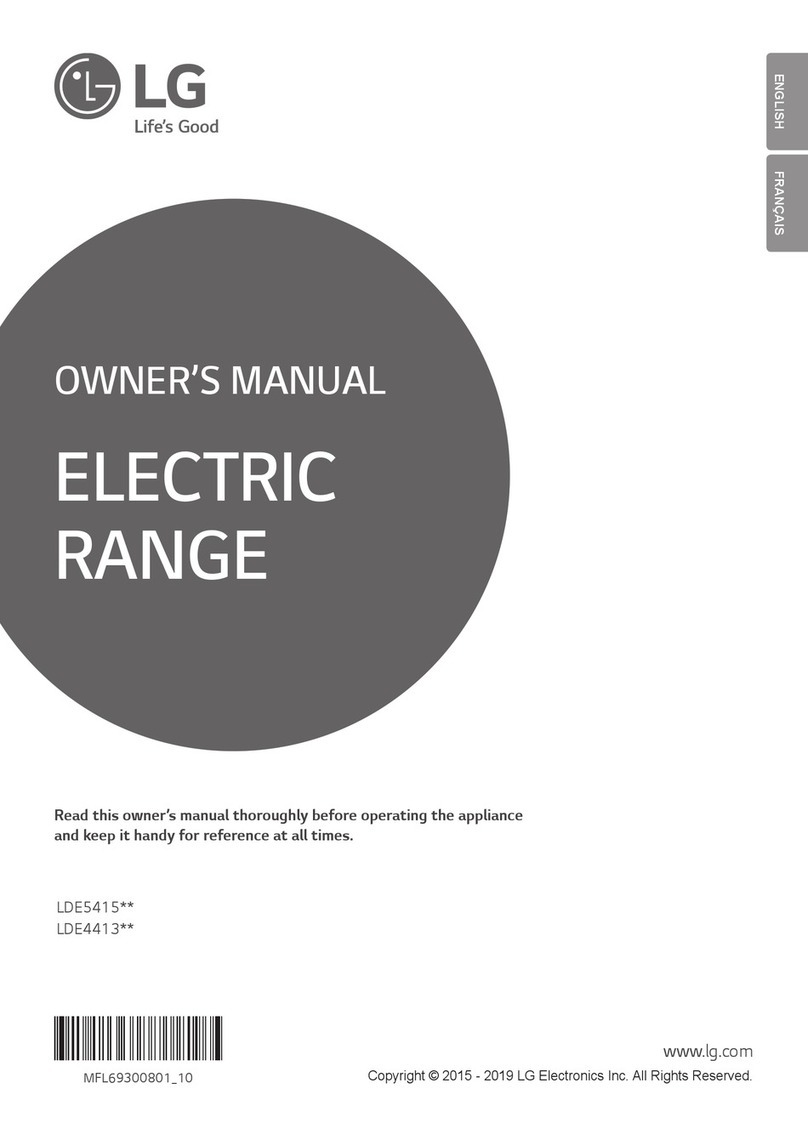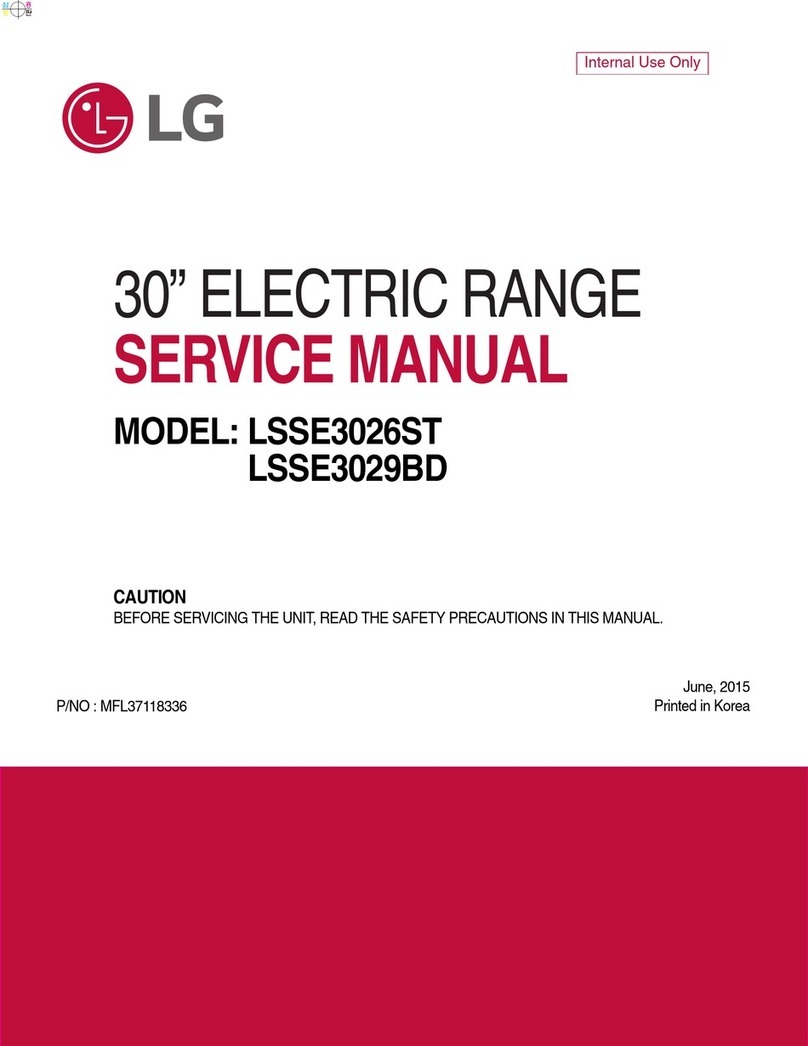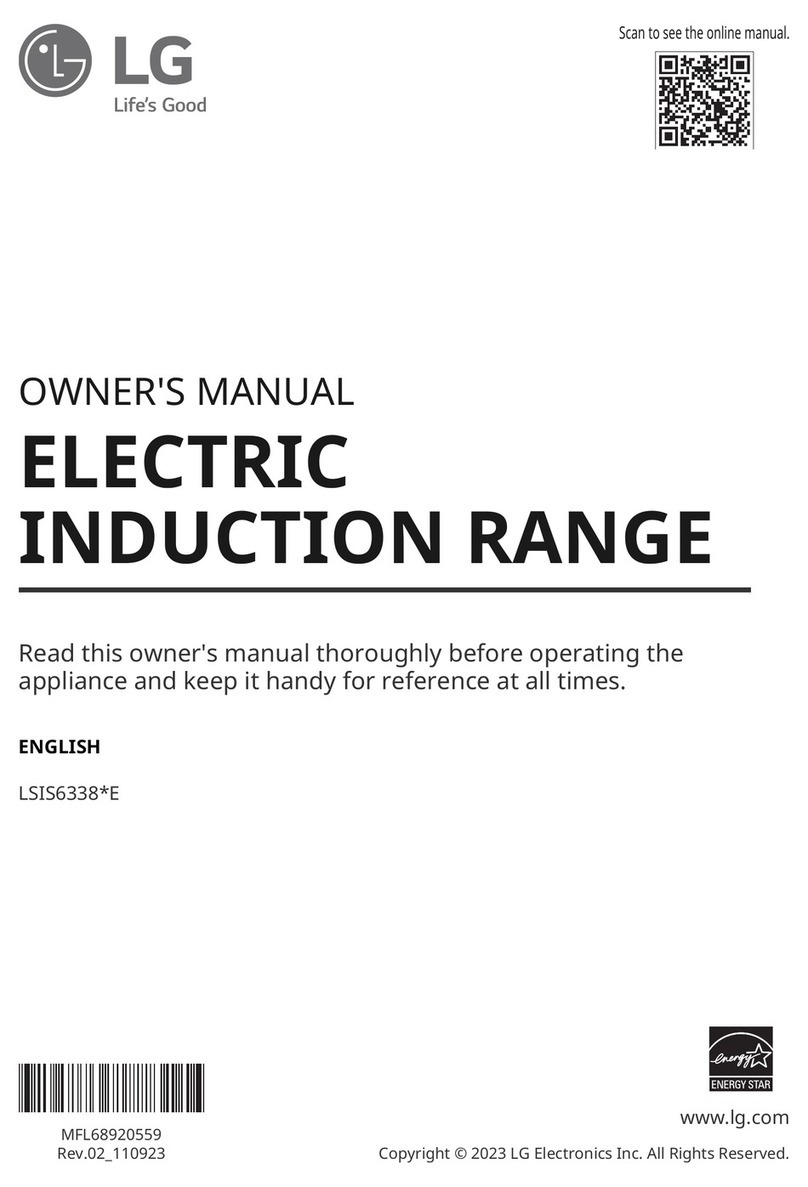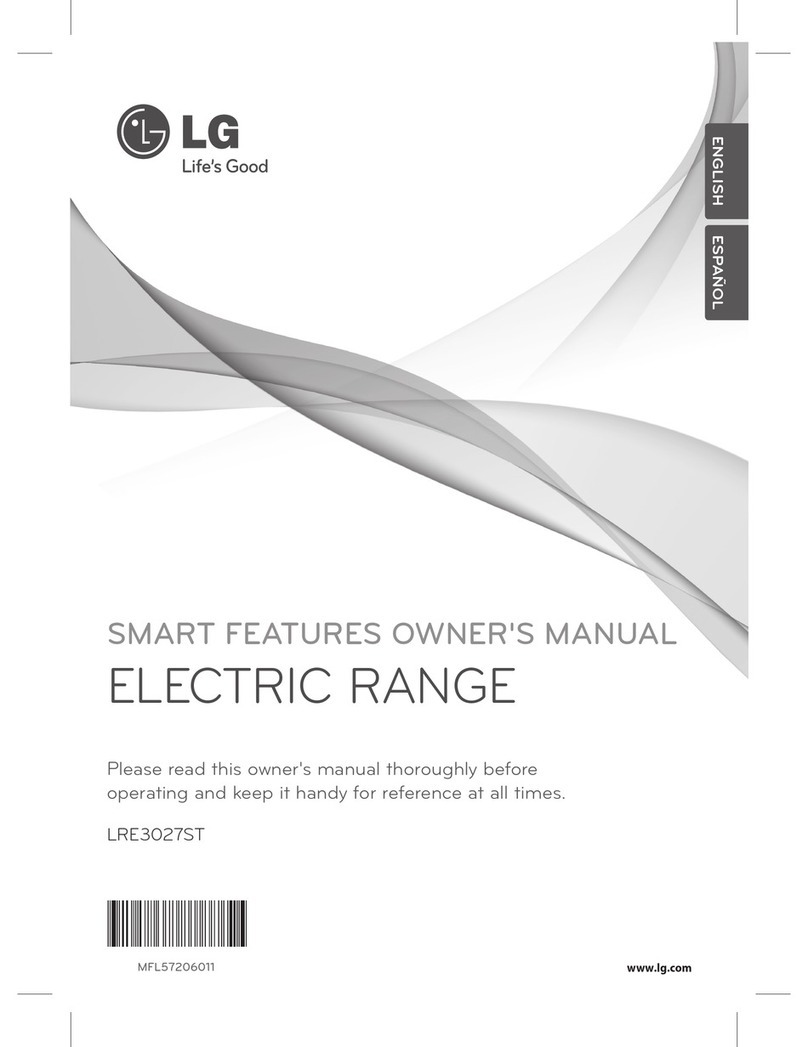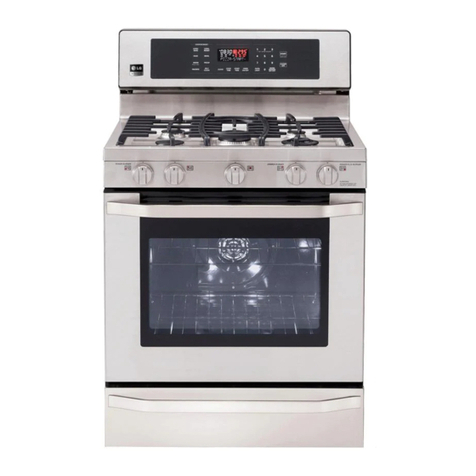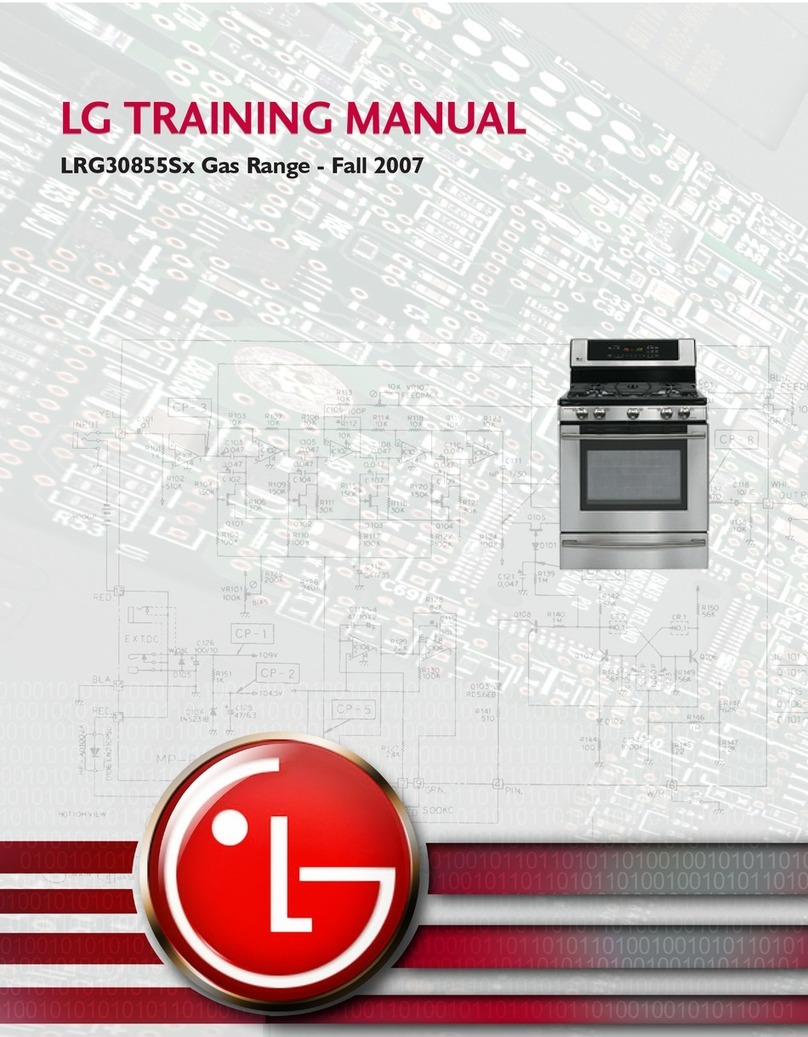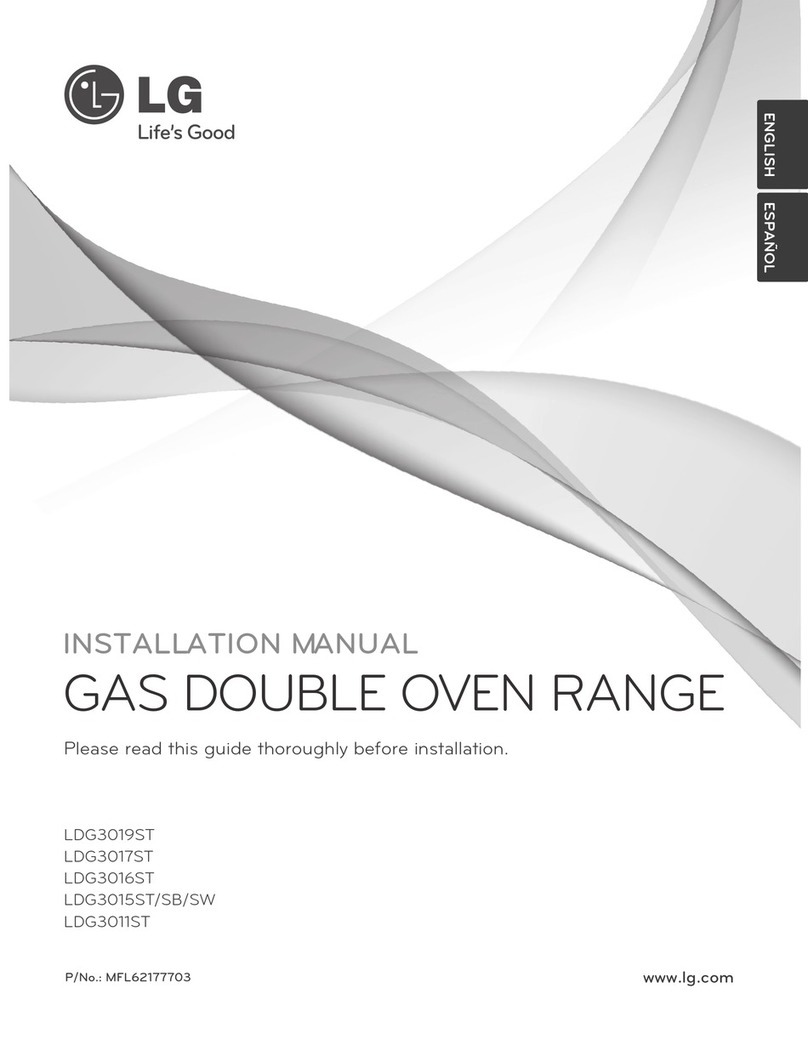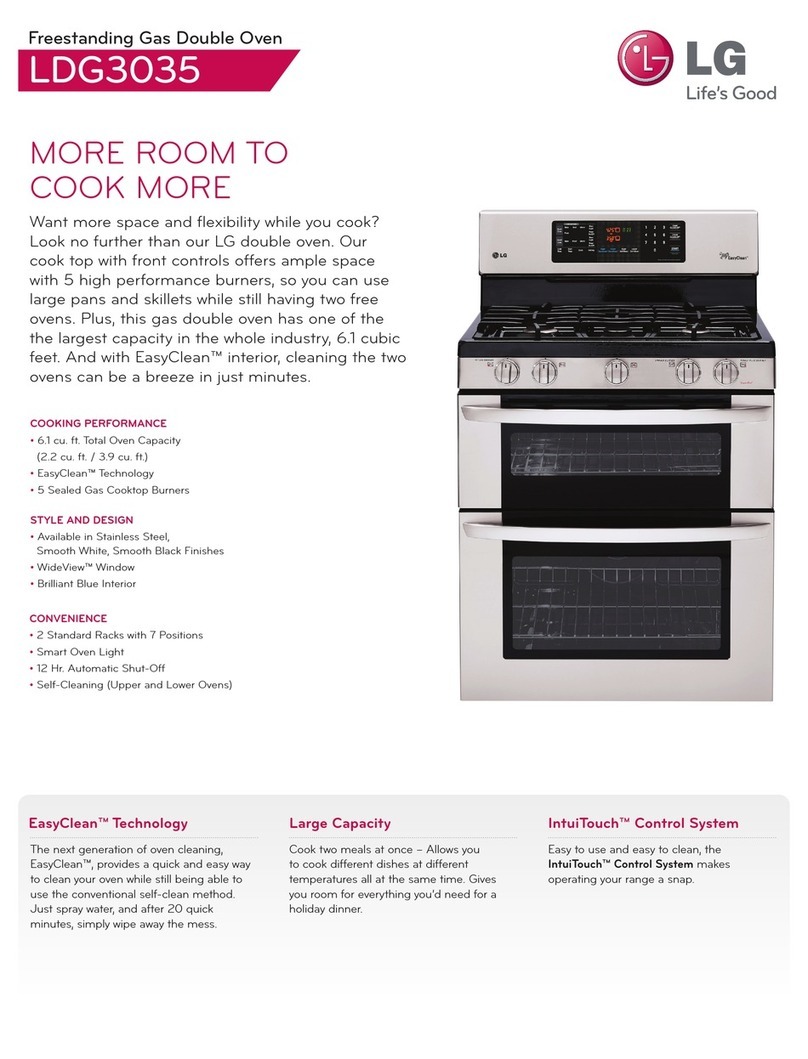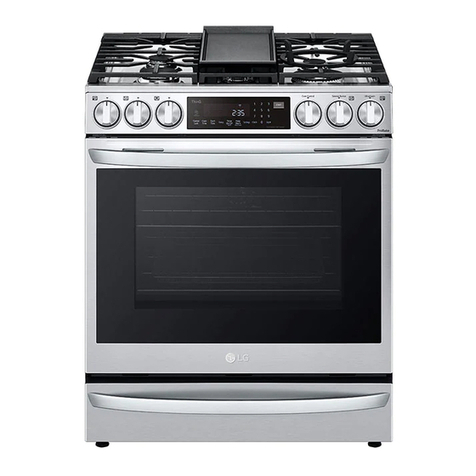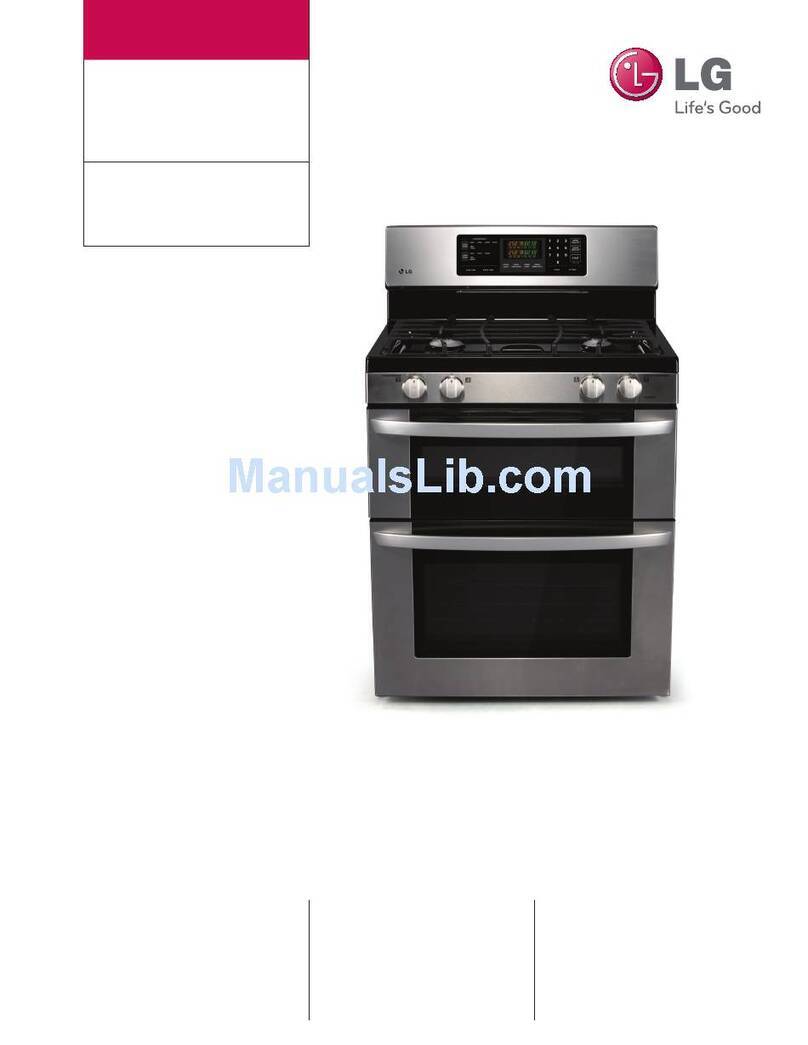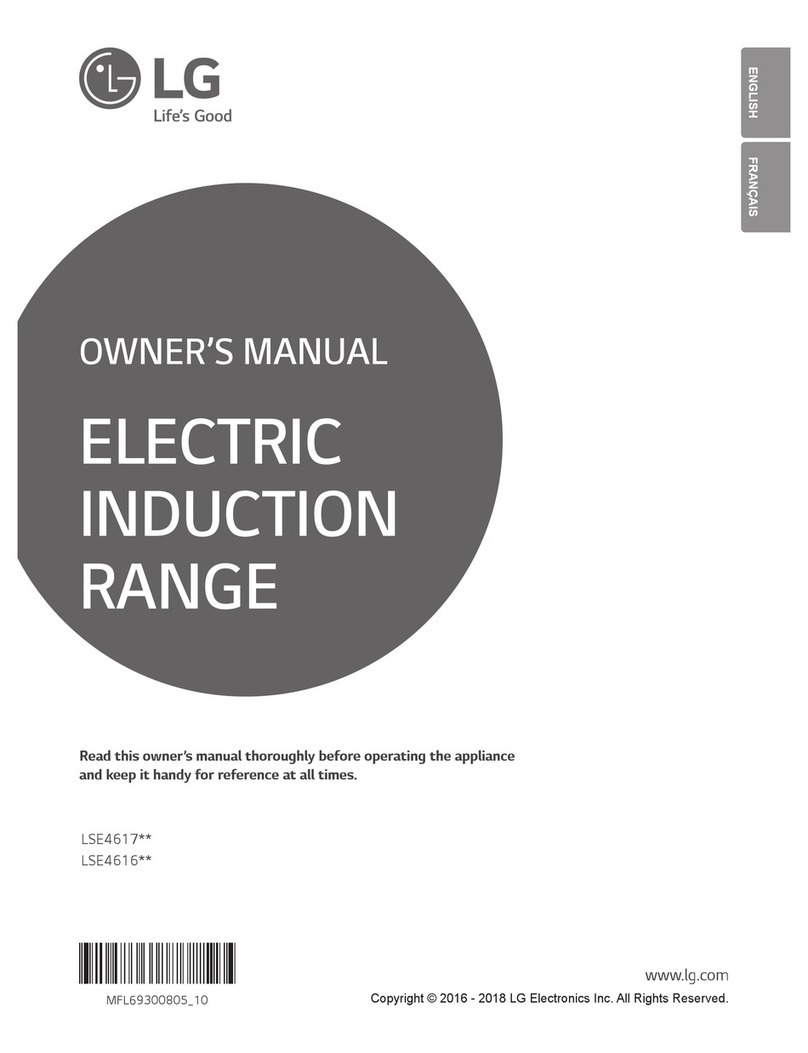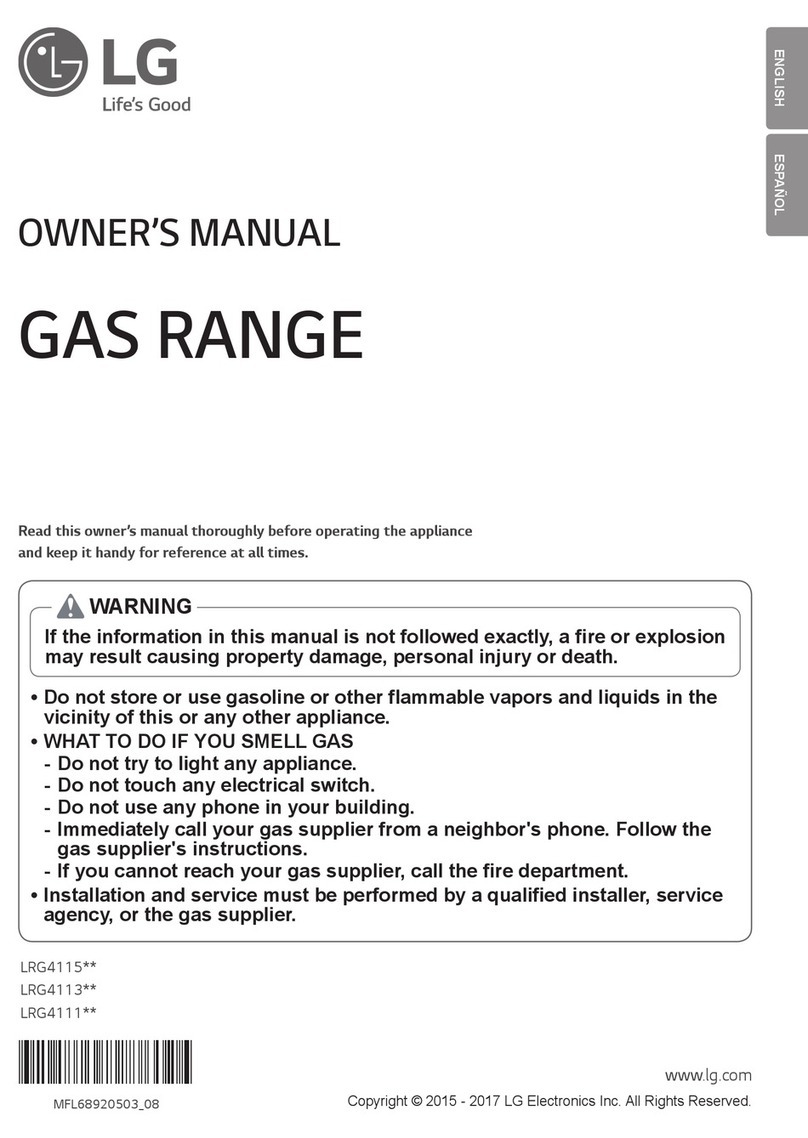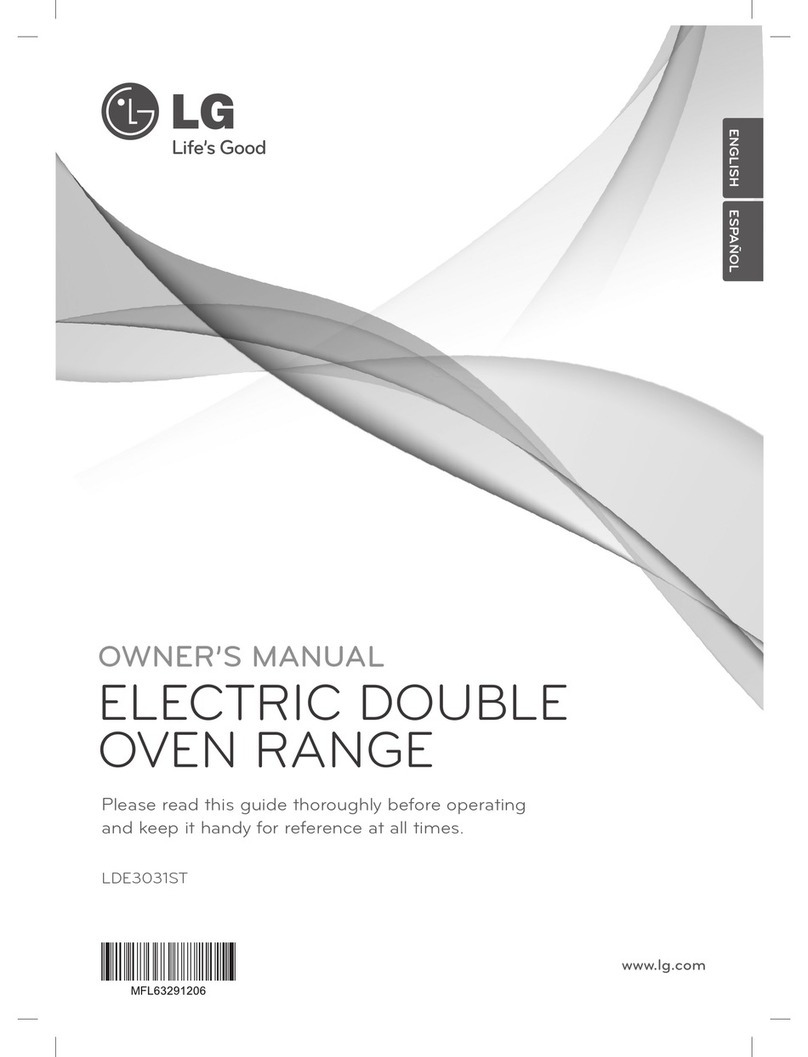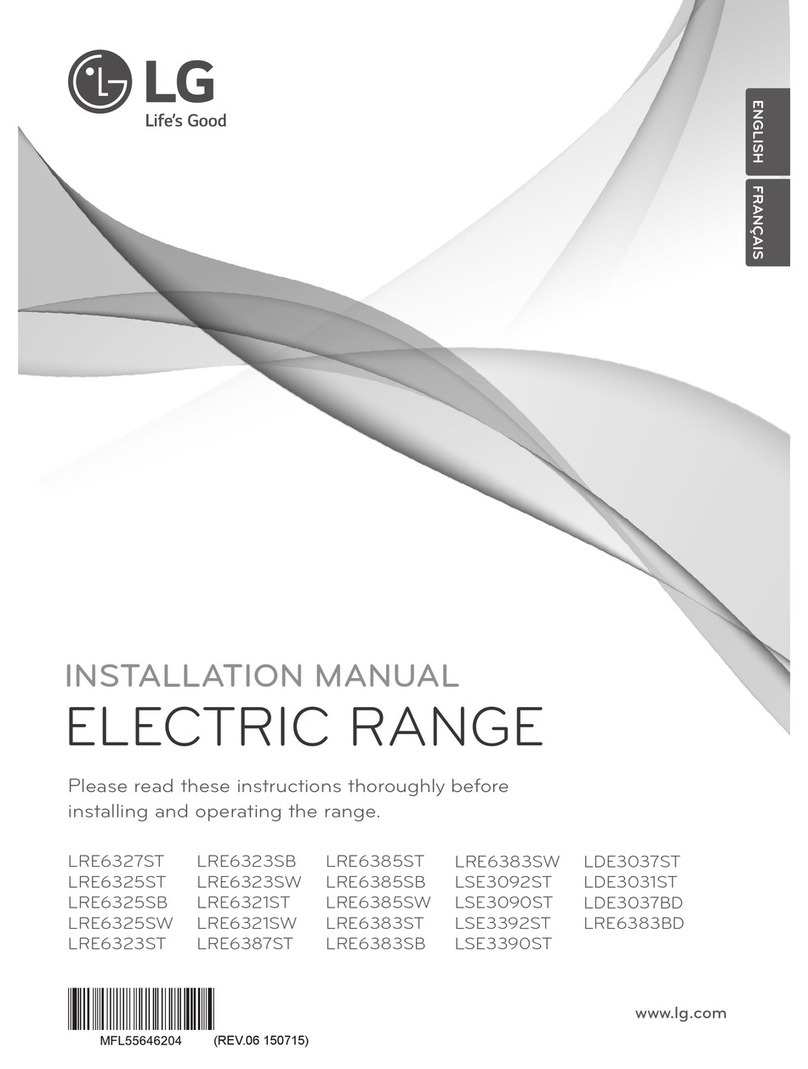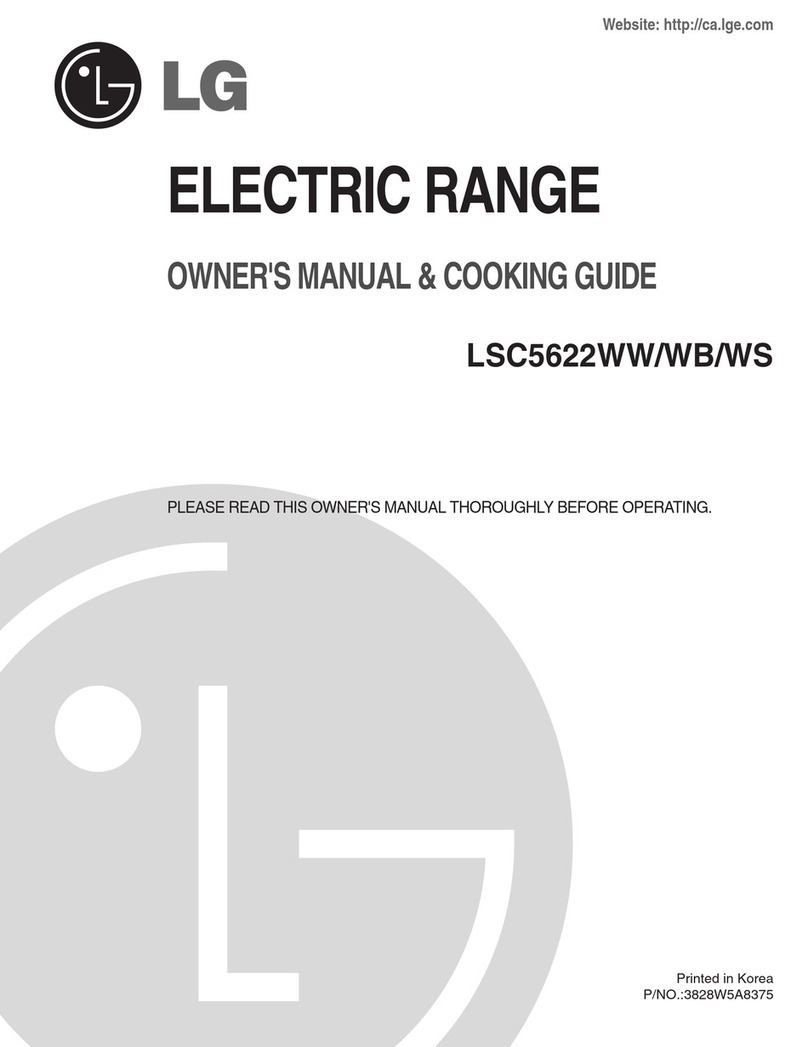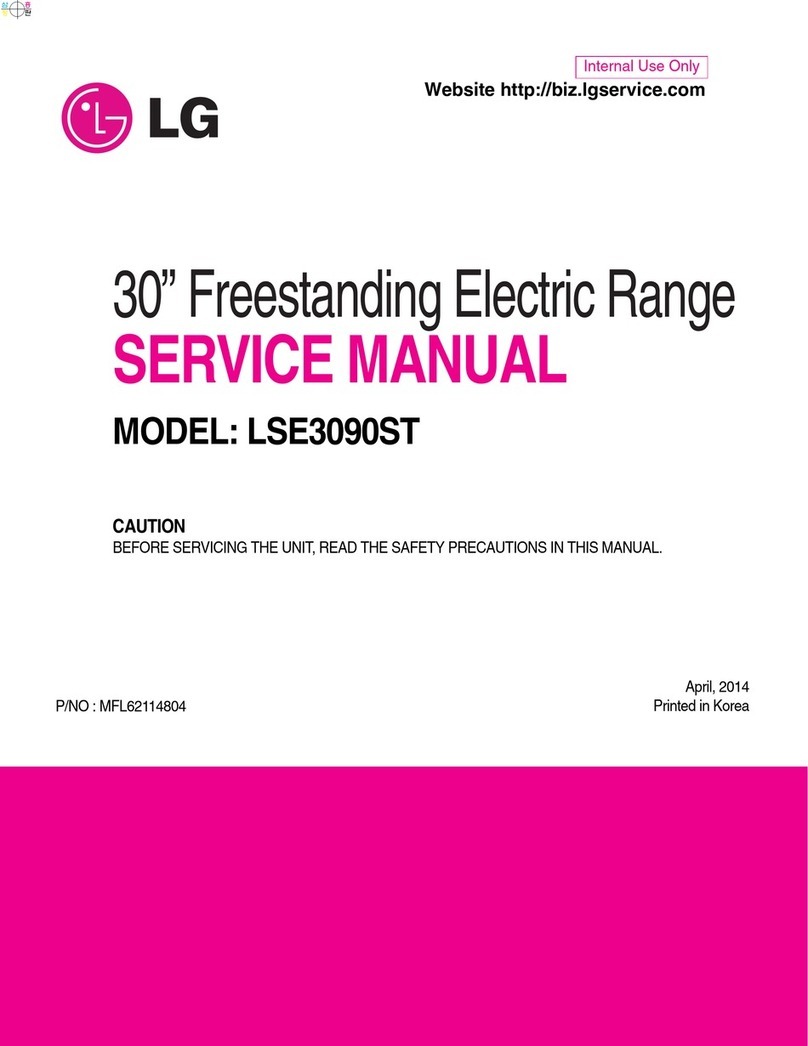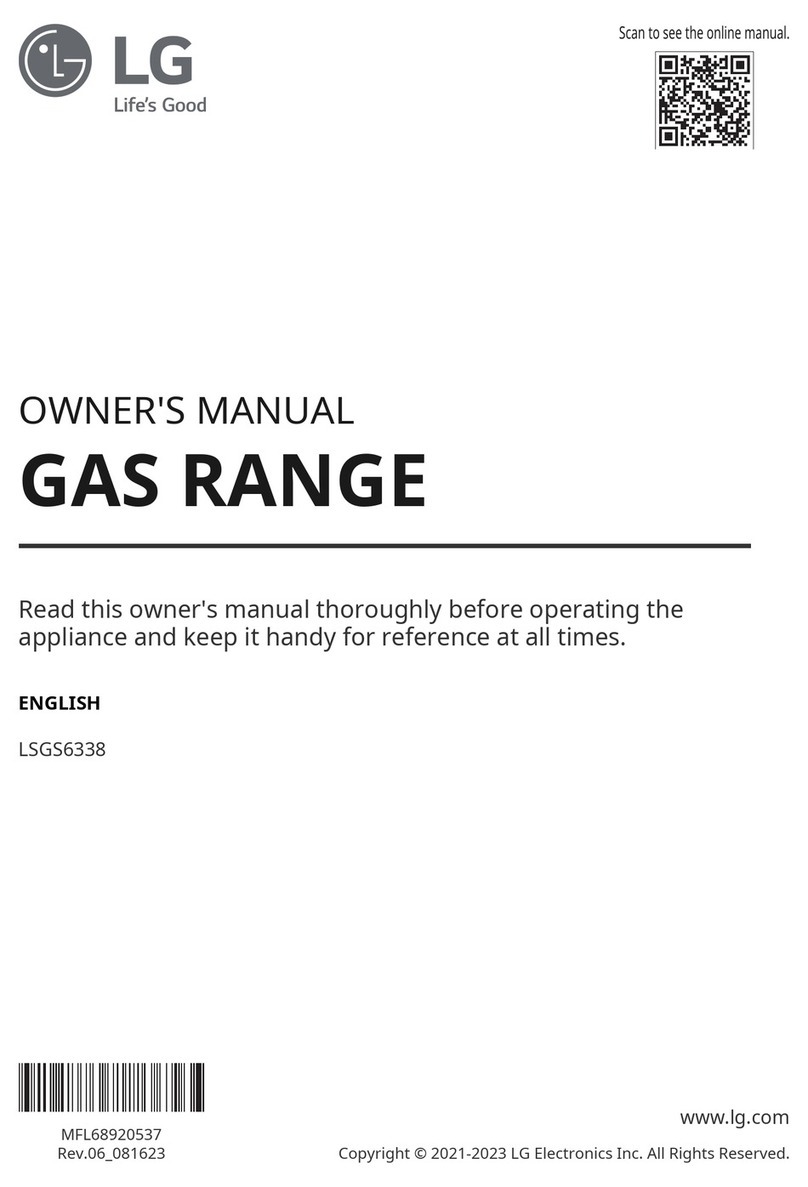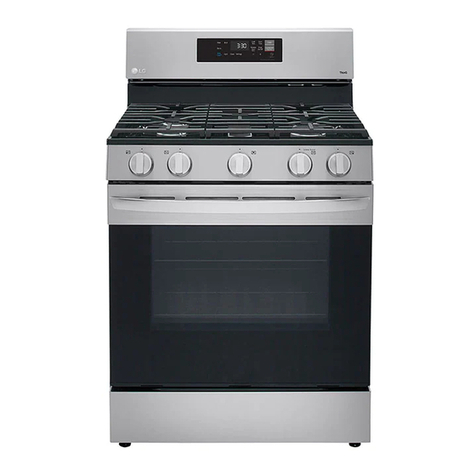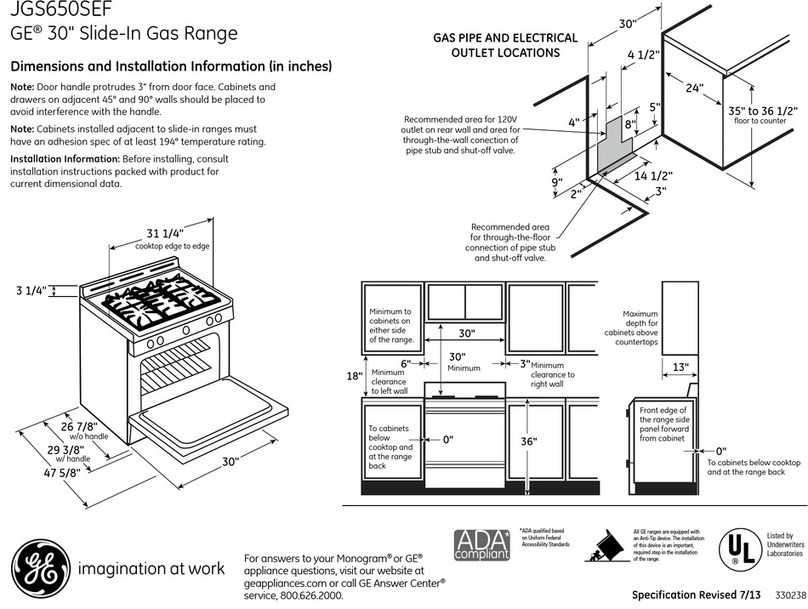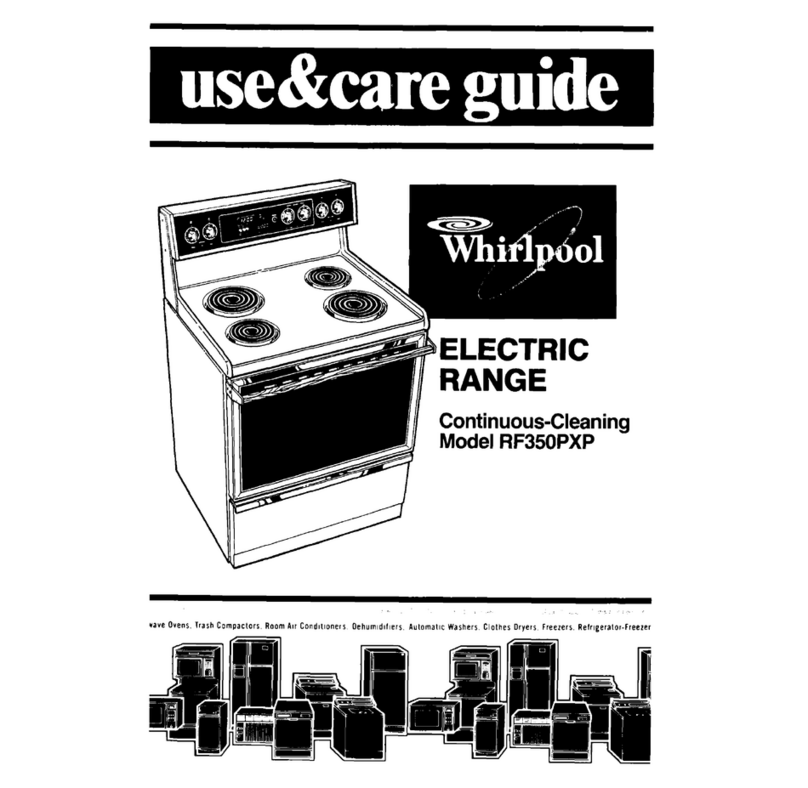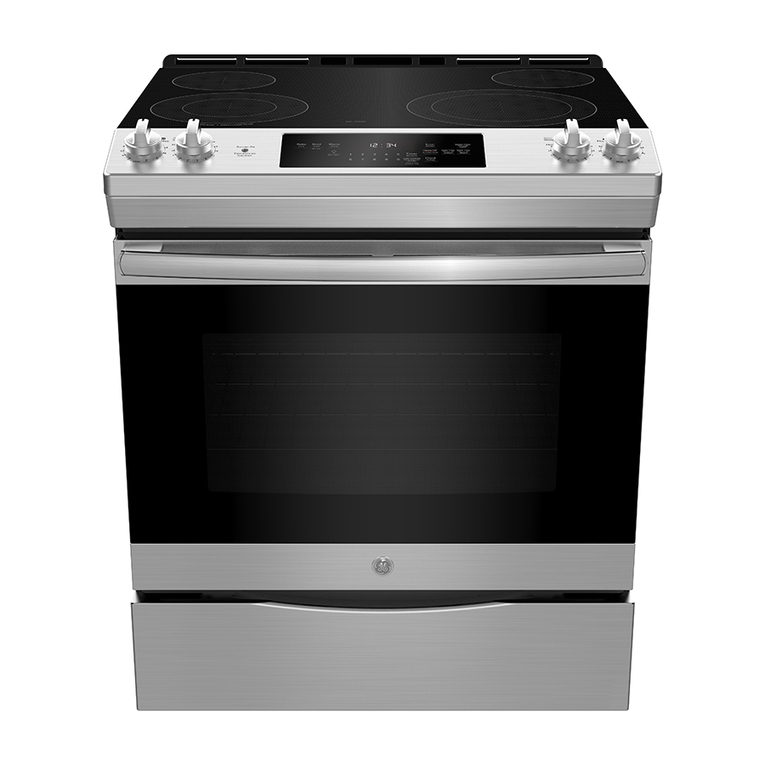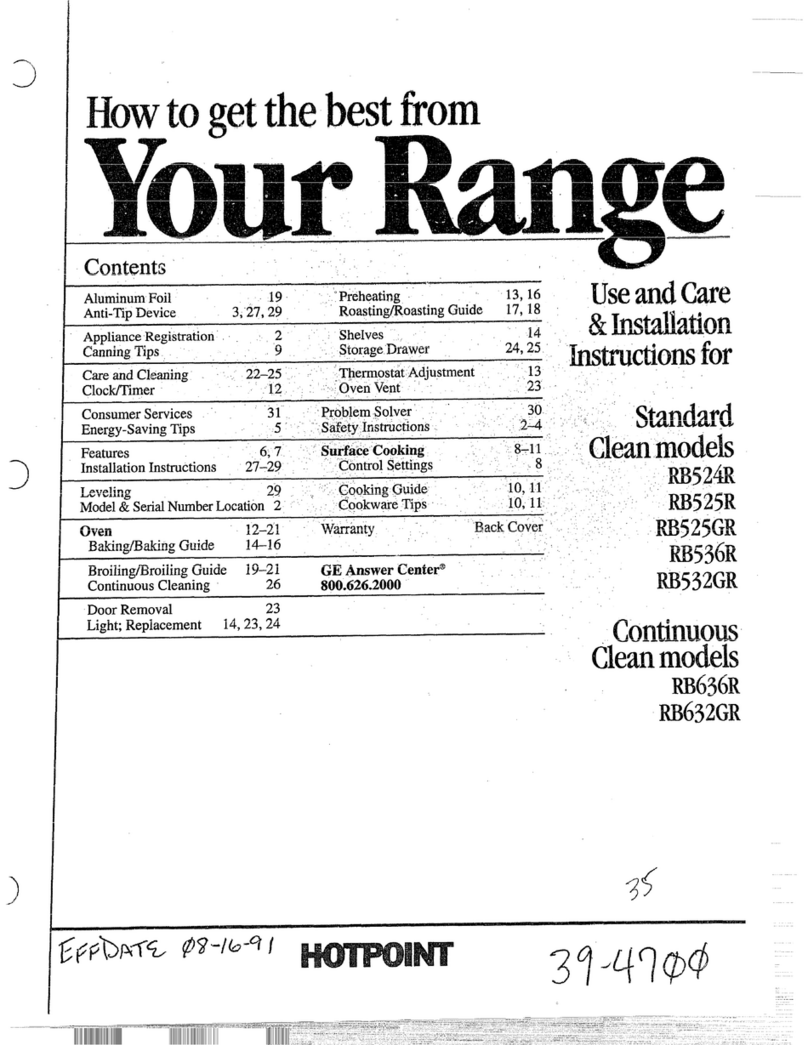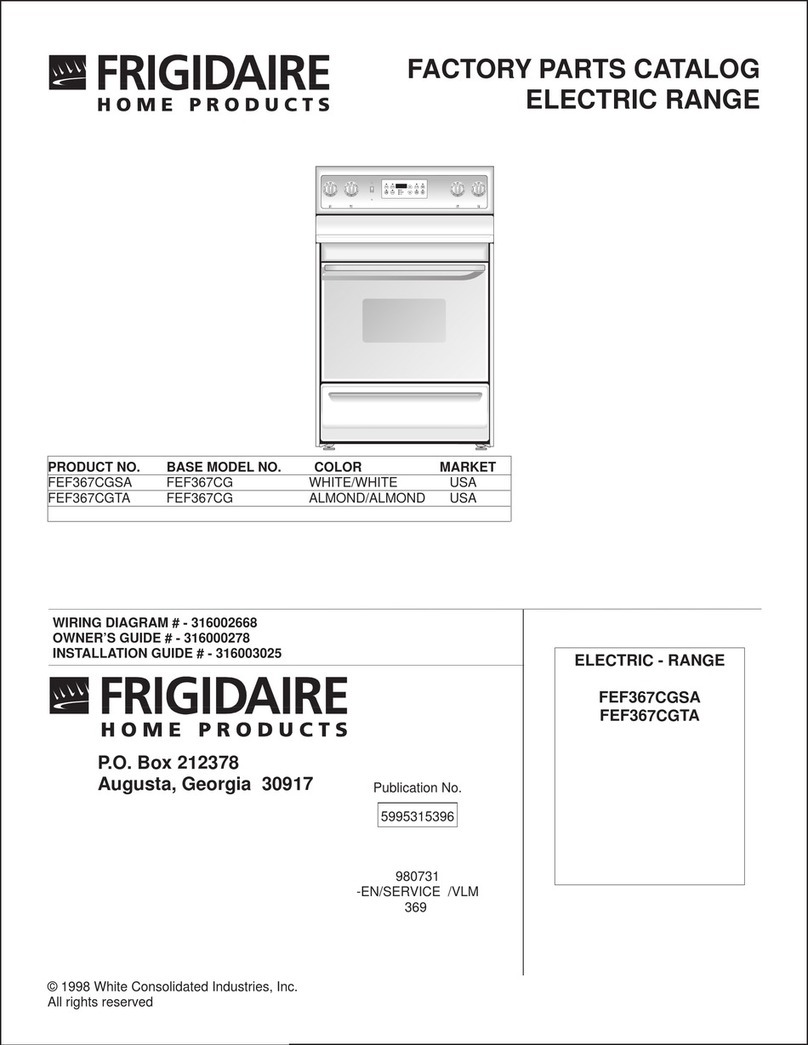8IMPORTANT SAFETY INSTRUCTIONS
yNEVER leave children alone or unsupervised near the appliance when it is in
use or is still hot. Children should never be allowed to sit or stand on any part of
the appliance as they could be injured or burned.
yNEVER store items of interest to children in cabinets above the range. Children
climbing on the range or on the oven door to reach items could be seriously
injured.
yLet hot utensils cool in a safe place, out of reach of small children.
yChildren should not be allowed to play with controls or other parts of the ap-
pliance.
GLASS/CERAMIC COOKING SURFACES
Stand to the side of the range when opening the oven door. The hot air and steam that
escape can cause burns to hands, face and eyes.
WARNING
yDO NOT TOUCH SURFACE UNITS OR AREAS NEAR UNITS.
ySurface units may be hot even though they are dark in color. Areas near surface units
may become hot enough to cause burns. During and after use, do not touch, or let
clothing or other ammable materials contact surface units or areas near units until
they have had sucient time to cool. This includes the cooktop and the area above
the oven door.
yDo not cook on a broken cooktop. If the cooktop should break, cleaning solutions
and spillovers may penetrate the broken cooktop and create a risk of electric shock.
Contact a qualied technician immediately.
yClean cooktop with Caution. Do not use sponges or cloth to wipe spills on a hot
cooking area. Use a proper metal scraper.
yDO NOT use the glass cooktop surface as a cutting board.
yDO NOT place or store items that can melt or catch re on the glass cooktop, even
when it is not being used.
yAlways turn the surface units on after placing cookware.
yDO NOT store heavy items above the cooktop surface that could fall and damage it.
yDO NOT place aluminum foil or plastic items such as salt and pepper shakers, spoon
holders, or plastic wrappings or any other material on the range when it is in use.
yBe sure you know which control pads operate each surface unit. Make sure you turned
on the correct surface unit.
yNEVER cook directly on the glass. Always use cookware.
yAlways place the pan in the center of the surface unit you are cooking on. NEV-
ER leave surface units unattended at high heat setting. Proper contact of uten-
sil to burner will also improve eciency.
-Boil overs cause smoking and greasy spillovers that may catch on re.
yAlways turn the surface units o before removing cookware.
yDO NOT use plastic wrap to cover food.
-Plastic may melt onto the surface and be very dicult to remove.
yDO NOT touch surface units until it has cooled down.
yThe surface elements may still be hot and burns may occur if the glass surface is
touched before it has cooled down suciently.
